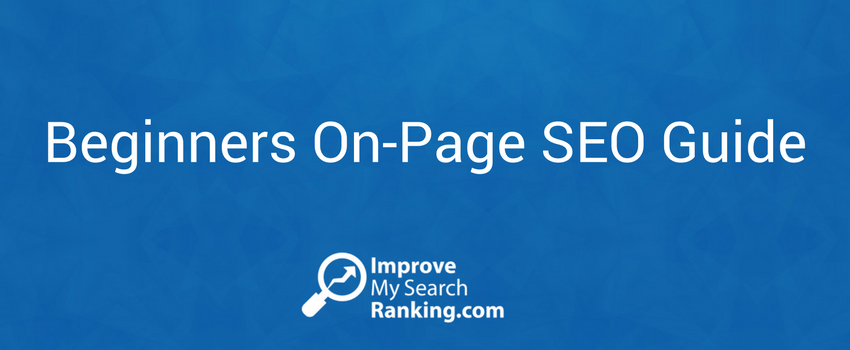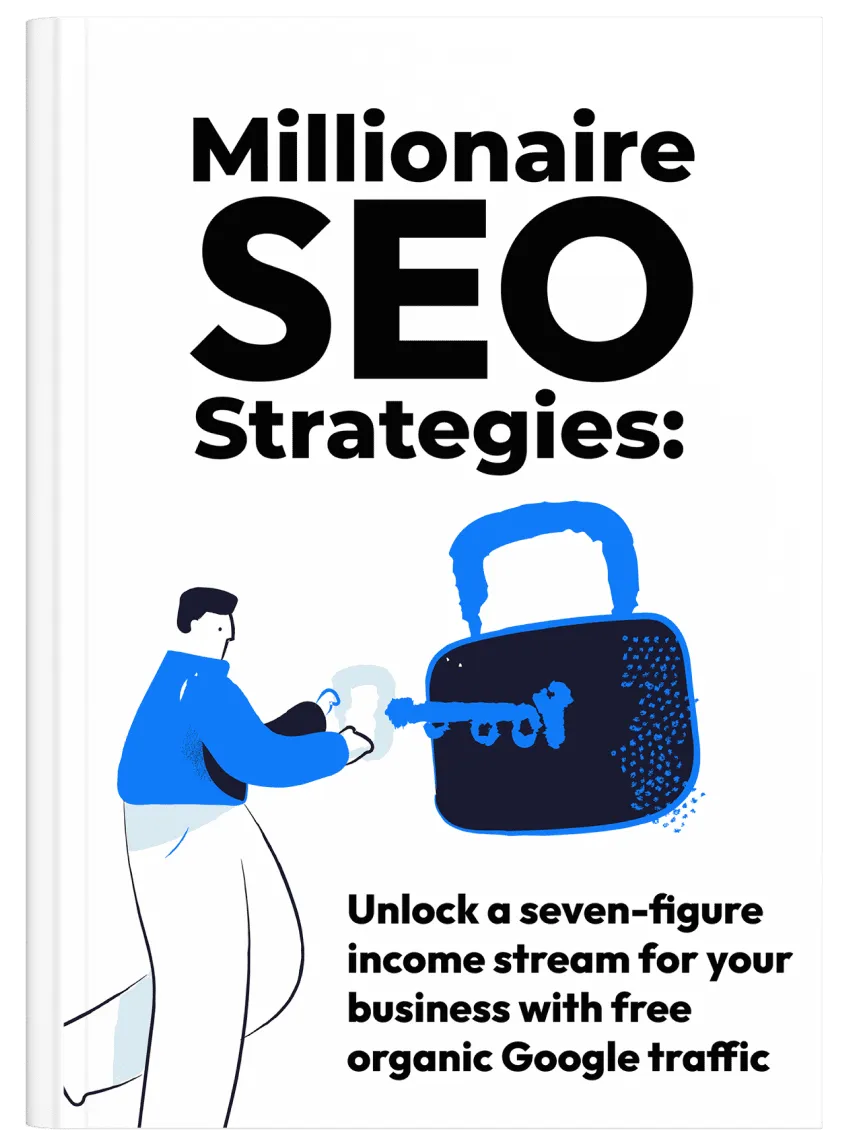
Beginners On-Page SEO Guide
There are several on-page SEO factors that effect how Google ranks your website.
Without a solid foundation of on-page SEO best practices you will find it extremely difficult to rank well for your target keywords.
In fact, effective on-page SEO remains, and always will be, a prerequisite for great SEO performance.
Therefore, as a bare minimum make sure you are abiding by the 6 points put forward in this blog post. This post highlights on-page SEO factors you must pay attention to and gives you practical tips on how to optimise each of them.
1. Content
The first thing to consider when looking to optimise a website for search is making sure the content of a page is worthy of a top search result position. You should ask yourself three questions before submitting a new piece of content on your website.
- Does this content supply a demand?
- Would I recommend this content to a friend or peer?
- Is this page worthy of a link?
Bare in mind the mantra “content is king” every time you produce or update a page on your website. Taking the time to consider these questions before creating content will result in your website becoming remarkable, more valuable and more likely to earn links from other websites.
2. Title Tag
The title tag, aside from the main content, is the most important On Page SEO element. It is defined in the <head> of a webpages code.
As per the two screen shots below the title tag appears both in the search engine results pages and in the browser bar.
- Primary Keyword – Secondary Keyword | Brand Name
- Brand Name | Primary Keyword and Secondary Keyword
- Primary Keyword | Brand Name | Secondary Keyword
At Improve My Search Ranking.com we test and measure each of above strategies. We recommend you do this to find the best solution for your particular website.
It is recommended that you only use your brand name at the front of the title tag if you have a powerful brand that will help you sell your product or service. In all other cases having the keyword or phrase at the front is recommended.
Best Practice Length
You should aim for all title tags to contain 70 characters or fewer as this is the limit Google displays in search results pages.
3. Metadescription
The metadescription does not influence the position of your webpages directly, but it is highly important to the human user. A pages metadescription is visible in the search results pages and is shown directly below the pages Title Tag. It is of great importance this text is written in a compelling fashion to entice click-throughs to your website.
It is important to include the keyword or phrase within the metadescription due to the boldening that occurs in the snippet of the search results. In the example below “SEO Kent” has been searched for.
Best Practice Length
Each pages metadescription should be limited to 156 characters as this is the limit Google displays in search results pages. If your page does not have a metadescription assigned to it the first 156 characters from the page copy will be used instead (or the text the search engine believes is most relevant to the search).
4. URL Structure
The third most important on page SEO factor is the URL structure. As with the metadescription and title tag it is important to include the keyword or phrase you want your website to rank for in the URL. As explained in our How Google Works article it is important search engine robots understand what your website is about and how relevant it is to a search query. Including the targeted keywords in the URL helps Google determine this.
A good example of a URL could look like the following;
- https://improvemysearchranking.com/how-google-works/
- https://improvemysearchranking.com/seo-solutions/local-seo/
A bad example could look like this;
- https://improvemysearchranking.com/title/p=9r039e/edsfv12093.php
The two good examples clearly show within the URL what the pages are about. The second good example shows search engine robots that ‘local seo’ is related to ‘seo solutions’.
The bad example does not reflect the information hierarchy of the website nor does it include any keywords to help the search engine determine its relevancy.
URL structure is important because it helps the search engines understand an individual pages’ relative importance and acts as a relevancy indicator. Moreover, its importance also comes into play when others link to your site; you will often find the text used in the URL (or heading of the page) is used as the anchor text from a linking page.
5. Heading Tags
As with the other on page areas discussed in this article it is important to use the keyword or phrase in the heading tags for relevancy. In the <h1> tag use the primary keyword, in the <h2> and <h3> tags use related secondary keywords.
For example on this page Beginners On-Page SEO Guide is the <h1> tag and all the individual headings underneath are <h2> and <h3>s.
6. Images – Alt Text, Title and File Name
One on page SEO best practise many webmasters do not bother with is image optimisation. Unfortunately Google isn’t great at understanding the contents of images and therefore it is important we help them out by adding a title and alt text attribute. As with all on page factors adding your keywords to these areas will make your page more relevant to a search query.
For example on this page the image about the ‘title tag’ is named Title-Tag-1.png and has been given the title and alt text ‘Title Tag’.
Summary
After reading this article you should know all the key places to add keywords to make your web pages super relevant to a search query. If you have any further questions about on-page SEO please email me @ josh@improvemysearchranking.com as I’ll be more than happy to help.
By Josh Hamit @hamit










Great guide Josh. After seeing your comment on FERNANDO BIZ, I wanted to come down here and see what you have. Actually the name really triggered me to see what you have on this blog. I like the clean design of this blog. So will be reading more to see how helpful your content for me and may audience.
Supporting to this article, I wanted to share the 12 tested strategies for perfect On-Page SEO: http://www.fernandobiz.com/how-to-do-on-page-seo-in-12-tested-strategies/ Hope this will give a more precise knowledge for your audience.
Hi Fernando,
Thanks for checking out my blog. As you have seen (via email), I do have a more comprehensive 19 On Page SEO best practice infographic. I am getting this branded for my website and will be added to this page in the near future :).
I hope you check back soon as I will be updating the blog regularly with best practice SEO and social media advice.
Talk soon,
Josh
Great guide Josh. After seeing your comment on FERNANDO BIZ, I wanted to come down here and see what you have. Actually the name really triggered me to see what you have on this blog. I like the clean design of this blog. So will be reading more to see how helpful your content for me and may audience.
Supporting to this article, I wanted to share the 12 tested strategies for perfect On-Page SEO: http://www.fernandobiz.com/how-to-do-on-page-seo-in-12-tested-strategies/ Hope this will give a more precise knowledge for your audience.
Hi Fernando,
Thanks for checking out my blog. As you have seen (via email), I do have a more comprehensive 19 On Page SEO best practice infographic. I am getting this branded for my website and will be added to this page in the near future :).
I hope you check back soon as I will be updating the blog regularly with best practice SEO and social media advice.
Talk soon,
Josh
This is a great guide Josh! It lays out the foundation for anyone who is new to SEO, but has some good reminders for the more experienced folks =)
Thanks for the good read!
– Gotch
Hi Gotch,
Thanks for your comment, I’m glad you enjoyed the article. I will be posting a more advanced guide to On-Page SEO in the near future so keep posted 🙂
Cheers,
Josh
This is a great guide Josh! It lays out the foundation for anyone who is new to SEO, but has some good reminders for the more experienced folks =)
Thanks for the good read!
– Gotch
Hi Gotch,
Thanks for your comment, I’m glad you enjoyed the article. I will be posting a more advanced guide to On-Page SEO in the near future so keep posted 🙂
Cheers,
Josh
Nice guide for beginners very informative.
Hi Arun,
Thanks for reading! Let us know if there is any content you would like us to write.
At the moment we are in the process of writing a more advanced on-page SEO guide.
I hope you’ll check it out when its published 🙂
Cheers,
Josh
Nice guide for beginners very informative.
Hi Arun,
Thanks for reading! Let us know if there is any content you would like us to write.
At the moment we are in the process of writing a more advanced on-page SEO guide.
I hope you’ll check it out when its published 🙂
Cheers,
Josh
Great On-page SEO guide! I like your comments on content:
Does this content supply a demand?
Would I recommend this content to a friend or peer?
Is this page worthy of a link?
Great question to ask when creating content, this is the hard part, and if you do it well it makes the promotion end SO much easier. Thanks for sharing!
Hi Chris,
Thanks for the comment. Yes, I believe asking those 3 questions before publishing any piece of content is extremely important. And at the end of the day creating great content is better for everyone.
Josh
Great On-page SEO guide! I like your comments on content:
Does this content supply a demand?
Would I recommend this content to a friend or peer?
Is this page worthy of a link?
Great question to ask when creating content, this is the hard part, and if you do it well it makes the promotion end SO much easier. Thanks for sharing!
Hi Chris,
Thanks for the comment. Yes, I believe asking those 3 questions before publishing any piece of content is extremely important. And at the end of the day creating great content is better for everyone.
Josh
Excellent guide josh. I am reading your content all the information is very useful and unique. good job.
Manshu Ydoxy
Seo Specialist
Excellent guide josh. I am reading your content all the information is very useful and unique. good job.
Manshu Ydoxy
Seo Specialist
Nice Bro! I thing its important to mention the way you place keyword in the content even for the beginners. Most of people lake in keyword placement due to which they lake in ranking.
Nice Bro! I thing its important to mention the way you place keyword in the content even for the beginners. Most of people lake in keyword placement due to which they lake in ranking.
Also good thing to make the whole process optimized. Consider for next post these seo-chekers – SemRush, Plerdy Seo Alerts and MOZ platform
Also good thing to make the whole process optimized. Consider for next post these seo-chekers – SemRush, Plerdy Seo Alerts and MOZ platform
Hello, Informative post. I’m new to content creation and SEO. This article really helped.
Hello, Informative post. I’m new to content creation and SEO. This article really helped.